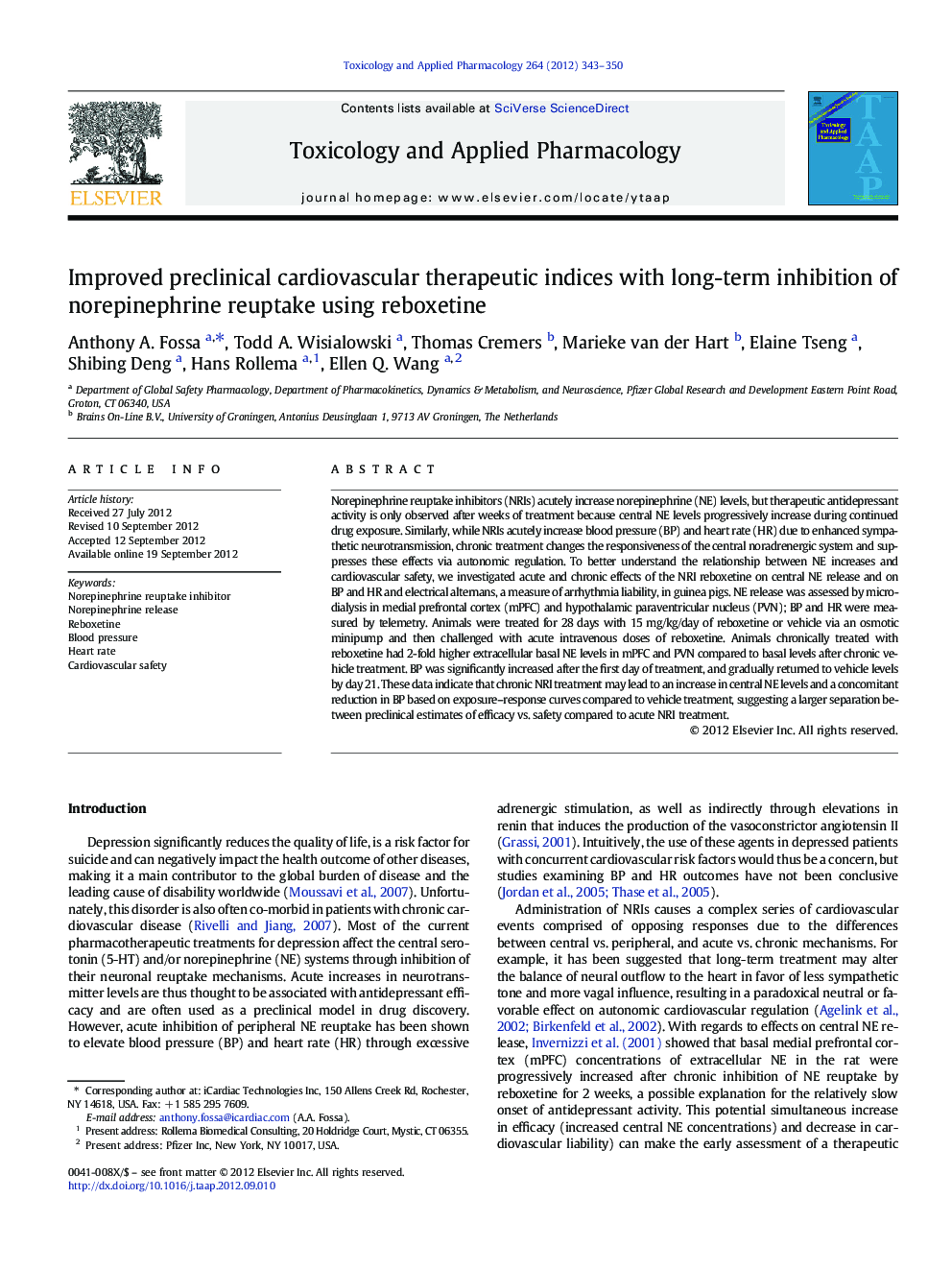| Article ID | Journal | Published Year | Pages | File Type |
|---|---|---|---|---|
| 2568879 | Toxicology and Applied Pharmacology | 2012 | 8 Pages |
Norepinephrine reuptake inhibitors (NRIs) acutely increase norepinephrine (NE) levels, but therapeutic antidepressant activity is only observed after weeks of treatment because central NE levels progressively increase during continued drug exposure. Similarly, while NRIs acutely increase blood pressure (BP) and heart rate (HR) due to enhanced sympathetic neurotransmission, chronic treatment changes the responsiveness of the central noradrenergic system and suppresses these effects via autonomic regulation. To better understand the relationship between NE increases and cardiovascular safety, we investigated acute and chronic effects of the NRI reboxetine on central NE release and on BP and HR and electrical alternans, a measure of arrhythmia liability, in guinea pigs. NE release was assessed by microdialysis in medial prefrontal cortex (mPFC) and hypothalamic paraventricular nucleus (PVN); BP and HR were measured by telemetry. Animals were treated for 28 days with 15 mg/kg/day of reboxetine or vehicle via an osmotic minipump and then challenged with acute intravenous doses of reboxetine. Animals chronically treated with reboxetine had 2-fold higher extracellular basal NE levels in mPFC and PVN compared to basal levels after chronic vehicle treatment. BP was significantly increased after the first day of treatment, and gradually returned to vehicle levels by day 21. These data indicate that chronic NRI treatment may lead to an increase in central NE levels and a concomitant reduction in BP based on exposure–response curves compared to vehicle treatment, suggesting a larger separation between preclinical estimates of efficacy vs. safety compared to acute NRI treatment.
► Acute RBX produces blood pressure increases acutely that decrease with chronic RBX ► Chronic RBX increases brain NE levels, a preclinical surrogate of improved efficacy ► Short-term screening of NRI often underestimates the chronic therapeutic index ► Chronic cardiovascular safety and efficacy more adequately address therapeutic index ► Similar paradigms may exist with other centrally and peripherally acting drugs
